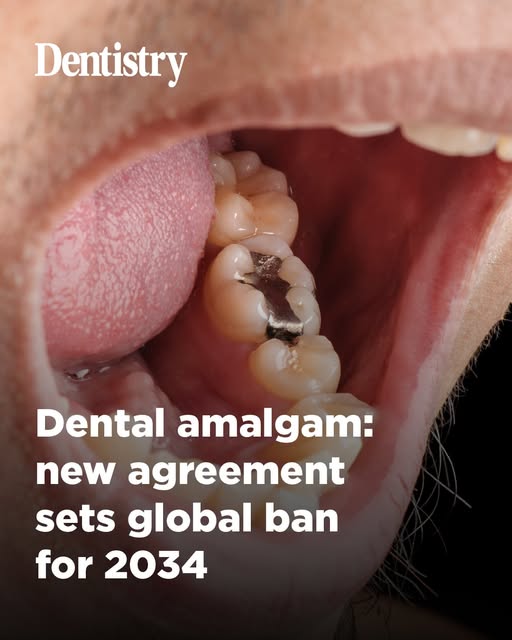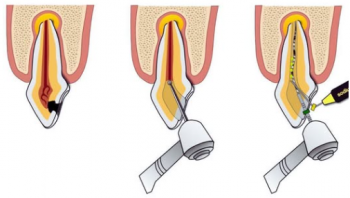Dentures That Feel Natural, Look Beautiful.
The Silver Lining: Why Dental Amalgam Fillings Are Fading into History in the Philippines
Language :

Topics:
For generations, the sight of a "silver filling" has been a common part of the Filipino dental experience. Known as amalgam, this durable and affordable material has been the go-to solution for cavities for over a century. But the era of the "silver smile" is coming to a deliberate and global close.
A recent international agreement has set 2034 as a global phase-out date for dental amalgam, marking a pivotal shift in dental care. For the Philippines, this isn't just a change in materials; it's a leap into a future of safer, more aesthetic, and more advanced dentistry.
The "Why" Behind the Goodbye: It's More Than Just Mercury
The primary driver for this phase-out is amalgam's composition, which is about 50% mercury. While the mercury in amalgam is bound in a stable alloy, concerns about its environmental impact and potential health risks have fueled the push for alternatives.
-
Environmental Impact: When teeth with amalgam fillings are cremated or when fillings are removed, mercury can be released into the environment. It can enter our water and soil, eventually making its way into the food chain. For an archipelago like the Philippines, protecting our marine ecosystems is paramount.
-
Health Considerations: Although the health risks from intact amalgam fillings are considered low for the general population, the precautionary principle prevails. Eliminating a known neurotoxin from routine medical use is a proactive step for public health.
-
Aesthetic & Technological Shifts: Modern dentistry has evolved. Patients today want restorations that are not just functional but invisible. The rise of superior, tooth-colored materials has made amalgam aesthetically and technically obsolete.
Analysis: The Philippine Dental Landscape in Transition
The phase-out presents both a significant challenge and a tremendous opportunity for the Philippines.
The Challenge: Affordability and Access
Amalgam's biggest advantage was its low cost. For a country where a large portion of the population seeks the most affordable dental care, the immediate question is: What will replace it for low-income families? The transition must be managed carefully to ensure that the cost of alternatives doesn't create a barrier to essential dental care, potentially leading to more untreated decay.
The Opportunity: A Leap into Modern Dentistry
This mandate forces a necessary and positive evolution. It accelerates the adoption of tooth-colored composite resins and other advanced materials. This is a chance for the entire dental ecosystem—from government clinics to private practices—to upgrade skills and technology.
Innovation: The Future of Fillings is Already Here
The good news is that the alternatives to amalgam are not just substitutes; they are, in many ways, superior.
-
Composite Resins: These are the most common direct alternative. They bond directly to the tooth, which can strengthen its structure. They are mercury-free and perfectly matched to your natural tooth color. The technology behind them continues to improve, making them more durable and easier to place.
-
Glass Ionomers: These materials are fantastic for certain situations, especially in children and for non-load bearing areas. They release fluoride, which helps prevent further decay—a huge benefit for patients prone to cavities.
-
CAD/CAM Technology: The real game-changer. With systems like CEREC, a dentist can design, mill, and place a permanent, custom-fit ceramic inlay, onlay, or crown in a single visit. These ceramic restorations are incredibly strong, biocompatible, and aesthetically flawless. This represents the gold standard in restorative dentistry.
A Vision for 2034 and Beyond: The Filipino Smile, Reimagined
By 2034, the journey to a Filipino dental clinic will look different. The whir of the drill may be accompanied by the soft hum of a milling machine. The question will no longer be, "Silver or white?" but "Which shade of white matches your tooth perfectly?"
The phase-out of amalgam is a clear signal that dentistry is no longer just about repairing damage; it's about preserving health, enhancing aesthetics, and protecting our planet.
For Filipino patients, this means:
-
Safer, more biocompatible materials in your mouth.
-
More natural-looking results that boost confidence.
-
A stronger focus on prevention, as the entire system shifts towards a more holistic approach.
The silver filling will become a relic of the past, a symbol of a bygone era in dental care. The future of the Filipino smile is not silver—it’s brilliantly, naturally white.












